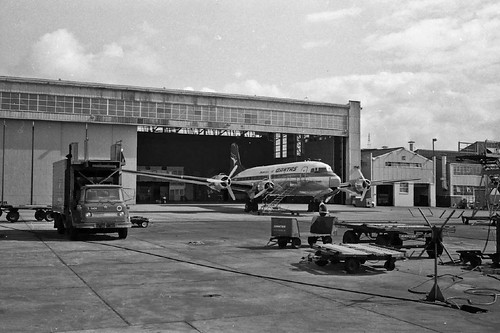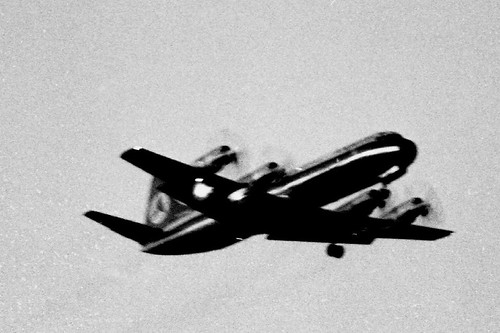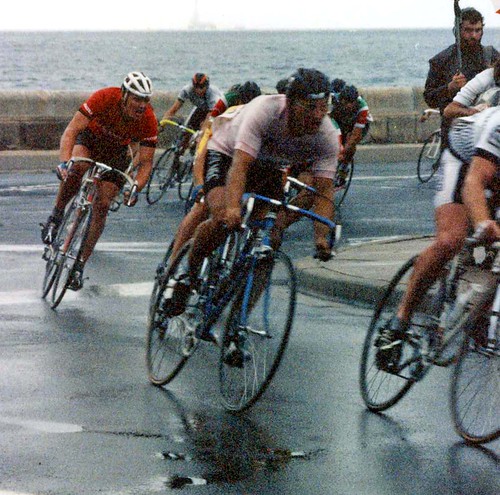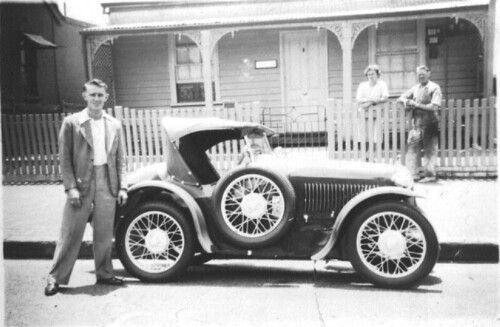I know Gumbramorra swamp quite well. It's dry, heavily paved and filled with factories. Plus the odd house or 3. When it rains, however, the swamp rises fast and floods Sydenham and Victoria Roads to car door-level in places. You get a bow-wave effect as you drive through it. I know this because a storm flooded this area in '79 and knocked out the electricals on my VW Golf. That sort of thing - stuck fast in a temporary lake - sticks in your mind.
It wasn't always exactly so developed and the story is interesting, so here are some links and quotes.
Quoted sections via Chrys Meader, 'Sydenham', Dictionary of Sydney, 2008,
http://www.dictionaryofsydney.org/entry/entry/sydenham, viewed
15 December 2011
Sydenham
Most of the western half of Sydenham was within the Gumbramorra Swamp, a local Aboriginal name, which provided an effective boundary for the early European land grants. The majority of Sydenham stands within Thomas Moore's Douglas Farm, granted in 1799. Thomas Moore was one of the largest landowners in the area.
Another grant of 30 acres (12.1 hectares) was made in 1799 to emancipated convict, John Fincham but it was virtually useless land as it was entirely contained by the swamp.
What else would you give an ex-con but a swamp? It certainly looked different back then:
Sydenham
The Gumbramorra Swamp emptied into the Gumbramorra Creek and then into Cooks River. Part of Sydenham and the suburbs of St Peters and Tempe developed to the south east of the swamp and the suburb of Marrickville to the west of it. Gumbramorra Swamp consisted of marshland at the foot of the declining sandstone and shoal ridges of Marrickville, in a relatively narrow area surrounded by low hills. At the mouth of the Gumbramorra Creek were mudflats, which were also evident in the swamp itself. Behind these mudflats and mangroves was the characteristic salt marsh. These conditions supported abundant wildlife. The Gumbramorra Swamp was a good source of food for the Aborigines.
I think that should be "sandstone and shale" ridges, by the way. I can imagine it, the low hills with dry sclerophyll eucalypt forest giving way to casuarinas followed by fresh-water mangroves and mudflats in a narrow strip along Sydenham (previously Swamp) Road. Given that it was elevated above the Cooks River it was in effect a large hanging swamp, with another such smaller swamp above it around Addison Road, Marrickville. It would indeed have risen and fallen with La Nina/El Nino events but afforded some sort of regular food and freshwater supply most times. It's hard to believe that now, of course. It basically looks very drab and industrial in the most part.
Of course it got developed, we know that, but surprisingly it was for cheap housing at first... until disaster struck.
Sydenham
In 1881 the tramway was constructed along the western boundary of the swamp, now Victoria Road. Part of the original line for the tramway was laid down in the swamp as an incentive to development.
The Tramvale subdivision was then offered for sale in 160 lots with double frontages. The subdivision targeted the working class, stressing the availability of employment within 'a centre of a manufacturing district' with a 'certainty of a rise in value'. The estate was badly designed, afflicted with regular flooding and poor drainage. It lacked basic sewerage facilities. Tramvale was notorious for its stench, which the breeze carried all the way to nearby Marrickville, St Peters and Tempe. Its inhabitants also suffered from a range of diseases, including typhoid fever. In summer the mosquito plagues reached epidemic proportions.
The stressed owners of Tramvale would never see a return on their investment. After five days of heavy rain in May 1889, Cooks River flooded and the water rushed up Gumbramorra Creek and into the swamp. Tramvale was the worst hit, with residents having to be rescued as their homes went quickly under water. There was a public outcry and questions were raised in the NSW Parliament about the ethics of developers who sold cheap land, which was both unhealthy and subject to regular flooding, to working-class people, who would never be able to resell.
And the fix was to make it industrial land only (for the most part, as some houses were built later). A pumping station was also built in Carrington Road and later the stormwater system of drains and pits was constructed. One such drain runs parallel with Sydenham Road and intrepid adventuring school kids have attested to its easy traverse to Sydenham. They can probably also attest to blind panic during flash floods after summer storms.
And to quote my own work...
Alexandra canal | Out out damned Blog!
The principal access roads to the Marrick village were Illawarra Road, a narrow track running south and Swamp (later called Sydenham) Road, running from the west to the south-east. A western track ran from Parramatta Road through Petersham and downhill to link up to Swamp Road, later becoming Petersham Road, and another (again from Parramatta Road) became Livingstone Road. To the south (on higher ground) was another track which became the present Marrickville Road. As now, it ran from current New Canterbury Road to the swampland at Sydenham. Crucially, it connected all the north/south tracks in an east/west fashion and came into its own when the trams were routed down Victoria Street (Road) and the Bankstown railway line came into being.
Another Council document on the History of The Gumbramorra Swamp is worth a look, especially this extract: “early settlement of the upland areas naturally impinged on the swamp. Since much of the region was given over to grazing and timber-getting, the edges of the Swamp served a useful purpose to the inhabitants who worked the later Wardell estate. The existence of habitation on both sides of the Swamp encouraged some traffic across. By the 1840s, a track, and then a road, ran across the swamp to Unwin’s Bridge Road. This ‘Swamp Road’ is Sydenham Road“.
And “in 1855 the 60 acre estate of Thomas E Chalder, called Marrick, was subdivided. It became the village named Marrickville (1861) and the centre of the municipality. The village remained small, with only the minimum of community services. It was bounded, generally, by Illawarra Road, Chapel St, Fitzroy St and Sydenham (Swamp) Road and was in the vicinity of the north-western section of the Swamp. The construction of the tramway along Victoria St, the principal north-south route on the western side of the Swamp, in 1881 promoted settlement in the district at a time of large-scale suburban expansion. At the same time, plans for the Illawarra Railway (opened 1884) concentrated on the eastern side of the swampland, adjacent to Unwin’s Bridge Road. The Swamp area was no longer a relatively isolated and neglected sector.”
Sydenham railway station (on the Illawarra line) was originally Marrickville Station, renamed when today’s Marrickville station, closer to the intersection of Illawarra and Marrickville Roads, was established.
The general area, courtesy Google Maps.
View Larger Map
Zoom into the centre to see the industrial area for a rough approximation of the swamp's extent. West from Sydenham Railway Station along Sydenham Rd to Enmore road is dead flat but rises to a ridge along the east (Tempe to St Peters) with a gentler rise to Marrickville Road to the south and higher land to the north and west. Addison Rd swamp is to the north west. There are plenty of drains in evidence if you look hard and the heritage-listed pumping station and pit lies between Sydenham and St Peters stations.
Gumbramorra Creek flowed into Cooks River to the south of the creek, so I expect the original course is along or near Carrington Road, where a steam-driven pumping station was sited.
View Larger Map
More soon, I promise.
















